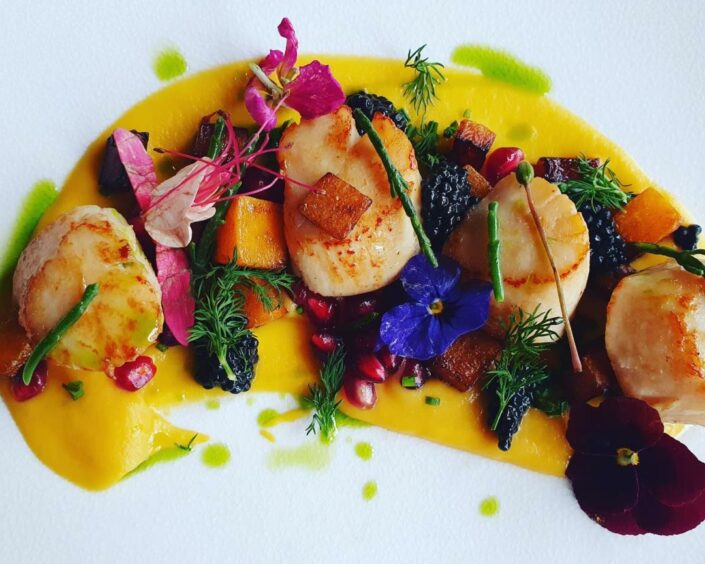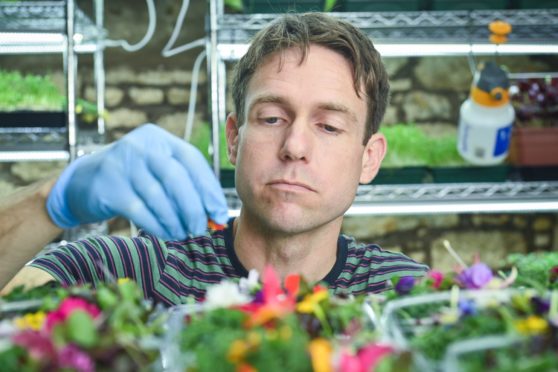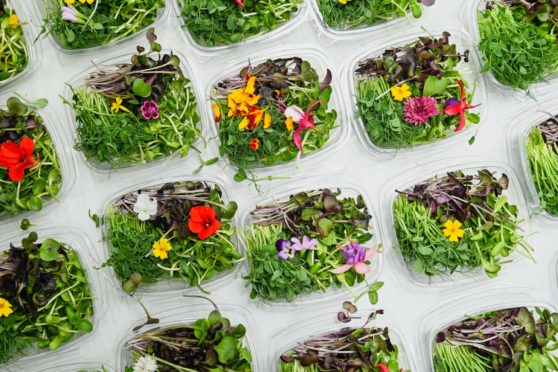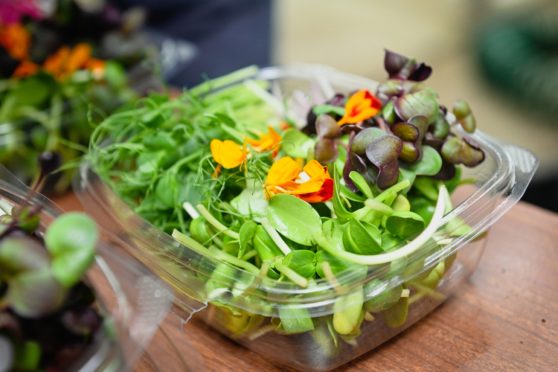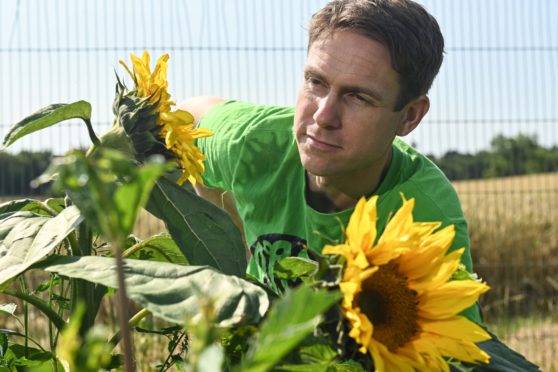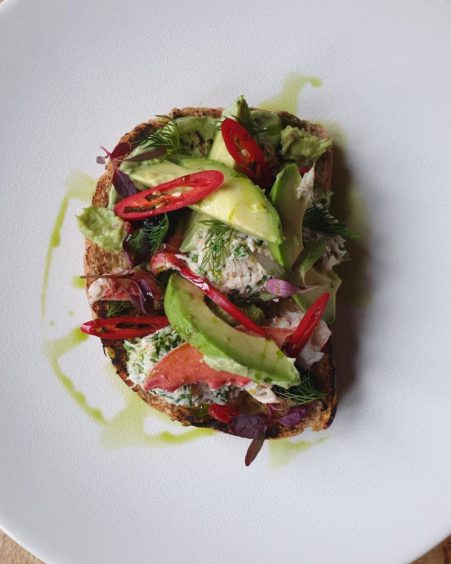There is no denying that microgreens completely transform a dish, whether it be soup, salad, seafood, curry, risotto, steak, or even pizza.
But when you think about the versatile superfoods, a number of questions may spring to mind. What exactly are microgreens? What do they bring to the table? Do they have any real benefits?
We often overlook them when they’re right in front of us, perched on top of our favourite meals when dining out.
Not only are they packed with nutrition, making them popular ingredients among the health-conscious, but they also allow us to inject life into the dull dishes, as well as give them that extra pop of flavour in delicate bites.
‘Healthiest food on the planet’
While Anna Wilson, of Huntly Herbs in Aberdeenshire, does not grow microgreens herself, she is still well aware of why they continue to be in high demand – not only in professional kitchens but our own kitchens, too.
She said: “Microgreens are vegetables and herbs which are harvested really early when the very first leaves have formed.
“The theory is that they are very nutrient-rich at that stage. Those first tiny leaves are full of concentrated nutrients and flavour. Quite often, I think they are used as little more than a garnish, but that doesn’t do them justice really.”
Huntly Herbs is renowned for its award-winning organic jams, chutneys and jellies.
Most recently, the business won Best of Organic Storecupboard – Jams and Spreads and overall Best of Organic Storecupboard for their hot lemon relish at the Best of the Organic Market Awards 2021 – the UK’s only organic awards.
Lots of consumers these days are looking for extra health benefits and functional food, so microgreens appeal as an easy way to get some of your five-a-day.”
Anna Wilson, a partner at Huntly Herbs.
“Microgreens have become more trendy in the last few years, so there will be demand from the restaurant trade,” Anna added.
“Lots of consumers these days are looking for extra health benefits and functional food, so microgreens appeal as an easy way to get some of your five-a-day.”
The benefits
Speaking on his take of their benefits, Daniel Oliveira, market gardener and founder of Rising Roots, based near Elgin, says microgreens “are known as the healthiest food on the planet”.
“This is due to their high concentration of nutrients and minerals harnessed within the first embryonic leaf,” he added.
“This nutrition is ready to supply the entire plant with what it needs to survive and thrive.
“Therefore, when harvested at such a young age, an individual can gain the benefit of all of these nutrients without the calories. From seed to harvest, they are grown for up to two weeks before they are harvested, packaged and consumed.”
Rising Roots, which launched in March 2020, is a young enterprise concentrating on delivering nutrient-dense microgreens to the local community.
The firm attends farmers’ markets and supplies zero-waste, farm and health shops, and offers a home delivery subscription where households can have microgreens delivered in a sealed clip-down glass jar, thus reducing waste and keeping them fresh for a long period of time.
Daniel said: “The recent trend in the microgreens business is due to the positive impact it can have on society.
“They not only contain all the optimum nutrition benefits which can help reduce cancer cells and provide high levels of minerals and vitamins to the human body, but the business model itself is also something that can benefit the health of society.
“In today’s world, we have a supplement and medication society that depends on gaining nutrients, vitamins and chemicals from easy to consume manufactured pills.
Depending on what your body is lacking, there are a variety of microgreens that will benefit you.”
Daniel Oliveira, market gardener and founder of Rising Roots.
“According to many leading nutrition experts, this is believed to be a surface level quick fix and does not concentrate on the fundamental route of one’s ailments.
“Although many supplements and medications do contain benefits, there are also many that serve little to no purpose due to the way that they are manufactured and digested.
“Microgreens, on the other hand, are freshly harvested food that our bodies are, by design, intended to digest.
“All microgreens have varying levels of all-important minerals such as calcium, phosphorus, potassium, sodium, chloride, magnesium, iron, zinc, iodine, chromium, copper and fluoride.
“Also, they contain varying levels of important vitamins such as A, C, D, E, K, and B vitamins.”
Enhancing dishes
As restrictions have eased, Rising Roots have started supplying microgreens to chefs at local restaurants.
Glenn Roach, chef proprietor at Taypark House in Dundee, a 10-bedroom boutique hotel and restaurant, is one of many Scottish chefs that adores microgreens – and aims to use them in his dishes as much as possible.
“My style at Taypark House is focused on letting the produce speak for itself and keeping it very simple,” said Glenn, from Monifeith.
“We are lucky to have such amazing produce in Scotland, and using microgreens is a great way of adding subtle flavour combinations to dishes and making them look visually appetising.
“They are full of nutrients, too, and are an easy way to add more greens to our diet.
“However, I am still a strong believer that adding a microgreen to a dish should be because the flavour is right for the produce, not just because it looks pretty.”

